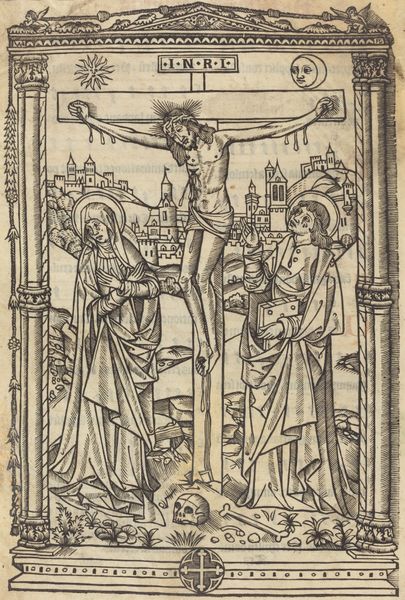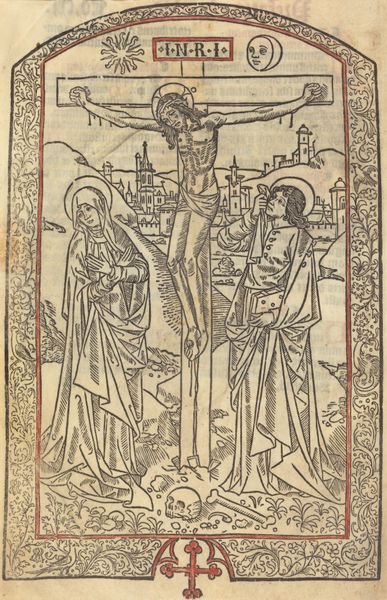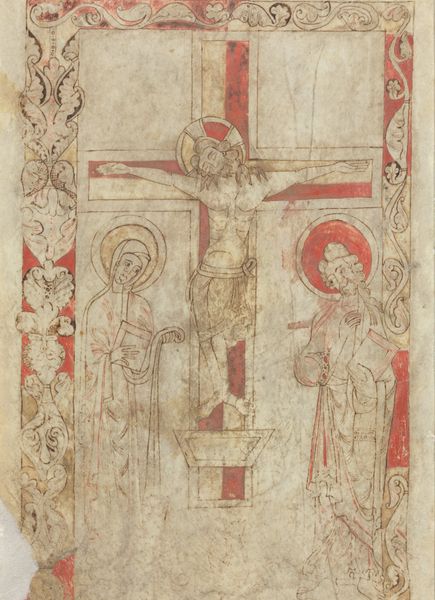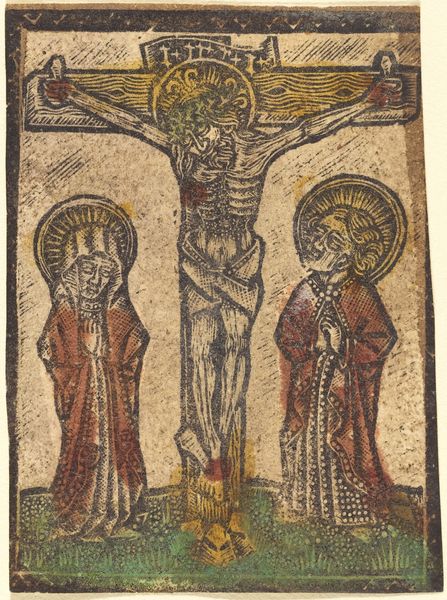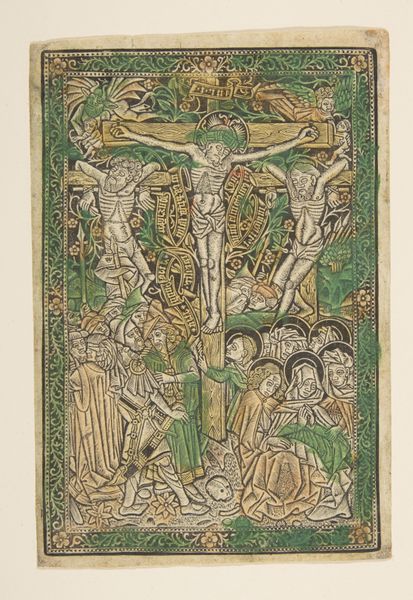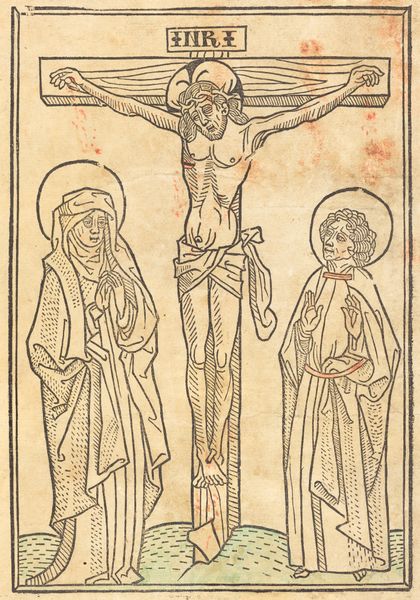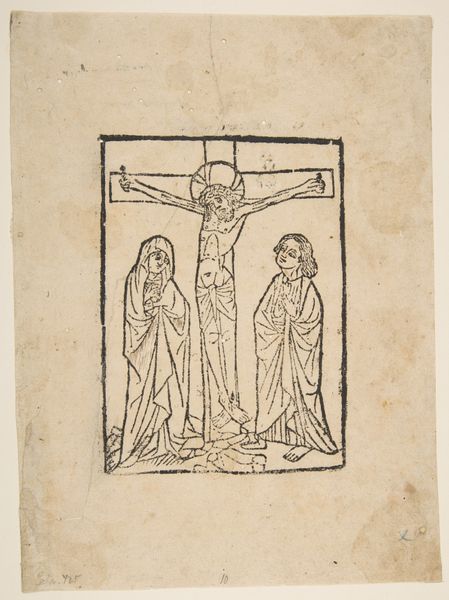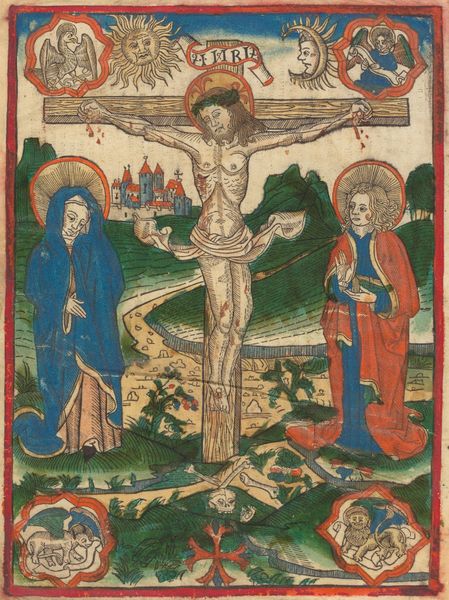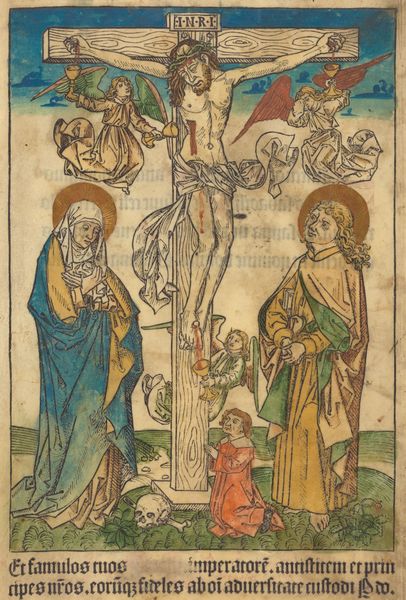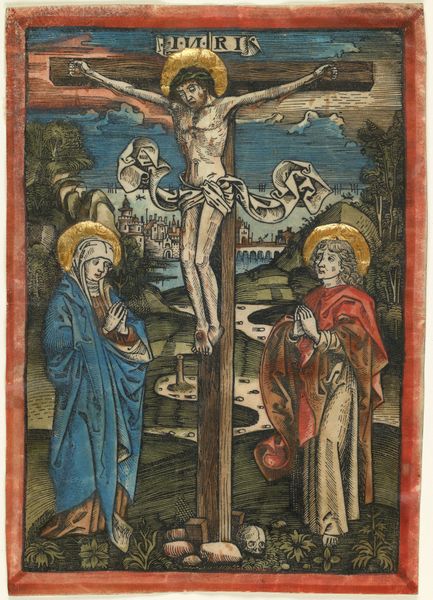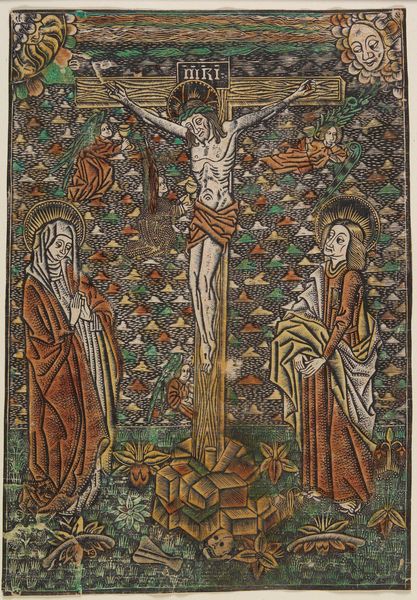
coloured-pencil, print, woodcut
#
coloured-pencil
# print
#
figuration
#
coloured pencil
#
woodcut
#
history-painting
#
northern-renaissance
Copyright: National Gallery of Art: CC0 1.0
Curator: Here we have an early 16th-century print called "The Crucifixion," a woodcut with later color additions. Editor: It has a striking simplicity, wouldn’t you say? Even stark. The limited color palette really underscores the rawness of the scene. Curator: Yes, well, let's consider its social function at the time. Woodcuts were a popular means of disseminating religious imagery. The emotional directness would be essential for devotional purposes. The impact would rely on instantly recognizable motifs. Editor: Exactly. Consider how this imagery functions politically within religious and cultural identity formation. There are strong female figures – Mary, and the kneeling Mary Magdalene – but what narratives of power do these presentations participate in, what audiences are really addressed here? The visual vocabulary is limited, though the text contributes another layer. It’s hard to ignore the implicit gender dynamics at play. Curator: The artist uses line effectively, with heavy contours that emphasize form, which is characteristic of prints produced around 1500. One can see a conscious decision to render the scene accessible, immediate, not to strive for too much elegance or polish. This piece must also be considered in a series or even an ensemble with other devotional materials. It's role within the local church might offer insight. Editor: But accessibility isn't neutral, is it? When we analyze this image, we must ask who controls access and what that implies in terms of power and representation. Whose story is this “Crucifixion” telling and who is given space within that narrative? I'm especially drawn to the two banners that frame the figure of Christ on the Cross and curious what audience the language addressed. Curator: I suppose the lack of detail makes it almost timeless, universal, wouldn’t you agree? This isn’t about individual suffering; it's about an idea made visible, widely distributed, part of an accepted framework for daily life and the salvation of souls. Editor: Perhaps, but that "universality" has been, and continues to be, historically imposed. And that always merits deeper examination, right?
Comments
No comments
Be the first to comment and join the conversation on the ultimate creative platform.
